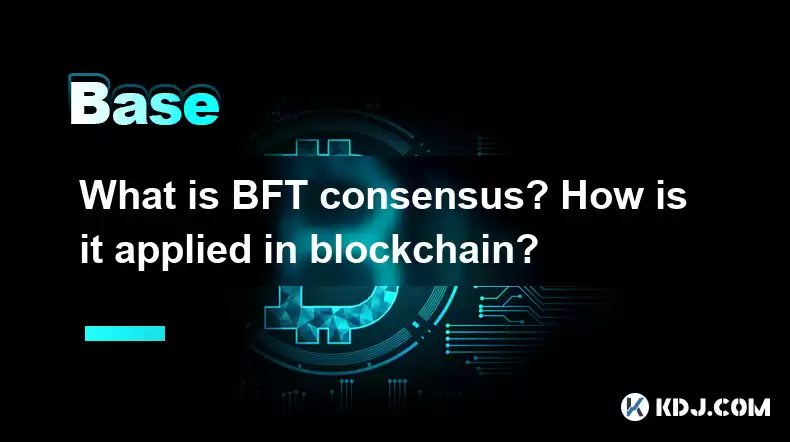-
 Bitcoin
Bitcoin $114100
-0.14% -
 Ethereum
Ethereum $3635
-0.73% -
 XRP
XRP $2.949
-2.85% -
 Tether USDt
Tether USDt $0.9999
-0.03% -
 BNB
BNB $760.3
-0.78% -
 Solana
Solana $163.8
-2.77% -
 USDC
USDC $0.9998
-0.04% -
 TRON
TRON $0.3323
-0.57% -
 Dogecoin
Dogecoin $0.2004
-2.99% -
 Cardano
Cardano $0.7245
-2.87% -
 Hyperliquid
Hyperliquid $37.52
-3.75% -
 Stellar
Stellar $0.3915
-3.58% -
 Sui
Sui $3.416
-2.20% -
 Bitcoin Cash
Bitcoin Cash $559.5
-0.84% -
 Chainlink
Chainlink $16.41
-2.16% -
 Hedera
Hedera $0.2406
-1.78% -
 Ethena USDe
Ethena USDe $1.001
0.00% -
 Avalanche
Avalanche $22.13
-1.98% -
 Litecoin
Litecoin $117.8
-4.32% -
 UNUS SED LEO
UNUS SED LEO $8.989
0.01% -
 Toncoin
Toncoin $3.183
-5.09% -
 Shiba Inu
Shiba Inu $0.00001214
-1.97% -
 Uniswap
Uniswap $9.654
-1.71% -
 Polkadot
Polkadot $3.616
-1.18% -
 Monero
Monero $291.6
-2.66% -
 Dai
Dai $0.9999
0.00% -
 Bitget Token
Bitget Token $4.310
-1.10% -
 Cronos
Cronos $0.1382
-1.93% -
 Pepe
Pepe $0.00001021
-3.40% -
 Aave
Aave $257.9
-1.42%
What is BFT consensus? How is it applied in blockchain?
BFT consensus ensures blockchain integrity by allowing nodes to agree on the state even if some are compromised, using voting phases to achieve this.
Apr 11, 2025 at 03:42 pm

BFT consensus, or Byzantine Fault Tolerance consensus, is a critical concept in the realm of blockchain technology. Byzantine Fault Tolerance refers to a system's ability to function correctly and reach consensus even when some of its components fail or act maliciously. This concept is crucial in blockchain because it ensures the integrity and security of the network, even in the presence of faulty or adversarial nodes.
Origins of BFT Consensus
The term "Byzantine" in BFT originates from the Byzantine Generals' Problem, a theoretical scenario used to describe the challenges of achieving consensus in a distributed system. In this scenario, multiple generals must coordinate an attack or retreat, but some generals may be traitors who send conflicting messages. The problem is to devise a strategy that ensures the loyal generals can reach a unanimous decision despite the presence of traitors. BFT consensus mechanisms in blockchain aim to solve a similar problem by allowing nodes to agree on the state of the blockchain, even if some nodes are compromised.
How BFT Consensus Works
BFT consensus algorithms are designed to handle up to one-third of nodes failing or acting maliciously. The core principle is to ensure that the system can still achieve consensus as long as more than two-thirds of the nodes are honest and functioning correctly. This is typically achieved through a series of rounds of voting and message exchanges among the nodes. Here’s a simplified overview of how a BFT consensus process might work:
- Pre-prepare Phase: A node proposes a new block and broadcasts it to the network.
- Prepare Phase: Other nodes vote on the proposed block. If a node receives enough votes, it moves to the next phase.
- Commit Phase: Nodes that have reached the prepare phase vote again to commit the block. If enough nodes agree, the block is added to the blockchain.
Application of BFT in Blockchain
BFT consensus mechanisms are particularly popular in permissioned blockchains where the identities of the nodes are known and controlled. Examples of blockchains using BFT include Hyperledger Fabric and Corda. These platforms use BFT to ensure high transaction throughput and low latency, which is crucial for enterprise applications.
In Hyperledger Fabric, for instance, the BFT consensus is achieved through a modular approach where different consensus algorithms can be plugged in. The default consensus mechanism in Hyperledger Fabric is called Raft, which is a crash fault-tolerant protocol but can be extended to handle Byzantine faults. This flexibility allows organizations to tailor the consensus mechanism to their specific needs.
BFT vs. Other Consensus Mechanisms
BFT consensus is often compared to other popular consensus mechanisms like Proof of Work (PoW) and Proof of Stake (PoS). Unlike PoW, which relies on computational power, BFT does not require significant energy consumption. This makes BFT more environmentally friendly and suitable for applications where energy efficiency is a priority. Additionally, BFT can achieve consensus much faster than PoW, making it ideal for use cases that require rapid transaction processing.
Compared to PoS, BFT offers stronger security guarantees against malicious actors. While PoS relies on the economic stake of validators, BFT can tolerate a certain percentage of nodes being compromised without failing. However, BFT requires a more complex setup and is less scalable than PoS, which can be a limitation in certain scenarios.
Implementing BFT Consensus in a Blockchain Network
Setting up a blockchain network with BFT consensus involves several steps. Here’s a detailed guide on how to implement BFT in a blockchain:
- Choose a BFT Algorithm: There are several BFT algorithms available, such as PBFT (Practical Byzantine Fault Tolerance), Tendermint, and HotStuff. Choose the one that best fits your network’s requirements.
- Set Up Nodes: Identify and set up the nodes that will participate in the consensus process. Ensure that the nodes are properly configured and connected to the network.
- Configure the Consensus Protocol: Implement the chosen BFT algorithm into your blockchain’s codebase. This involves writing the logic for the different phases of the consensus process (pre-prepare, prepare, commit).
- Test the Implementation: Before deploying the network, thoroughly test the BFT implementation to ensure it can handle various fault scenarios. Use simulation tools to mimic different types of node failures and attacks.
- Deploy and Monitor: Once the implementation is tested, deploy the blockchain network. Continuously monitor the network to ensure it maintains consensus and handles any faults that may arise.
Challenges and Considerations
Implementing BFT consensus in a blockchain network comes with its own set of challenges. One major challenge is scalability. BFT algorithms can become less efficient as the number of nodes increases, which can limit the size of the network. Additionally, the complexity of BFT algorithms can make them harder to implement and maintain compared to simpler consensus mechanisms.
Another consideration is the trade-off between security and performance. While BFT offers strong security guarantees, it can also introduce latency and reduce throughput. Network designers must carefully balance these factors to meet their specific use case requirements.
Frequently Asked Questions
Q: Can BFT consensus be used in public blockchains?
A: While BFT consensus is more commonly used in permissioned blockchains, it can be adapted for use in public blockchains. However, the scalability and performance limitations of BFT make it less suitable for large-scale public networks. Some projects, like Cosmos, use variations of BFT (such as Tendermint) in public settings, but these implementations often come with trade-offs in terms of decentralization and security.
Q: How does BFT handle network partitions?
A: BFT consensus mechanisms are designed to handle network partitions to some extent. If a network partition occurs, the BFT algorithm will continue to operate in the largest partition that still has a majority of honest nodes. However, if the partition results in no single partition having a majority of honest nodes, the system may fail to reach consensus until the partition is resolved.
Q: What is the difference between crash fault tolerance and Byzantine fault tolerance?
A: Crash fault tolerance (CFT) refers to a system's ability to continue functioning correctly even if some nodes fail or crash. Byzantine fault tolerance (BFT) goes a step further by also handling nodes that might act maliciously or send incorrect information. BFT is more robust and can handle a wider range of failure scenarios, but it is also more complex to implement and can be less efficient than CFT.
Q: Can BFT be combined with other consensus mechanisms?
A: Yes, BFT can be combined with other consensus mechanisms to create hybrid systems that leverage the strengths of each. For example, some blockchains use BFT for certain critical operations while using a more scalable mechanism like PoS for general transaction processing. This approach can help balance security, performance, and scalability.
Disclaimer:info@kdj.com
The information provided is not trading advice. kdj.com does not assume any responsibility for any investments made based on the information provided in this article. Cryptocurrencies are highly volatile and it is highly recommended that you invest with caution after thorough research!
If you believe that the content used on this website infringes your copyright, please contact us immediately (info@kdj.com) and we will delete it promptly.
- Acapulco Crafts in Crisis: Sales Plummet, Artisans Struggle
- 2025-08-06 14:30:12
- SEC, Crypto & Bitwise CIO: A New Dawn?
- 2025-08-06 14:35:11
- Coinbase, Financing, and the Crypto Market: Navigating Choppy Waters in NYC Style
- 2025-08-06 12:50:11
- Bitcoin in Indonesia: Crypto Education and Economic Strategy
- 2025-08-06 12:50:11
- DeriW Mainnet: Zero Gas Fees Revolutionize On-Chain Derivatives Trading
- 2025-08-06 10:30:11
- IOTA, Cloud Mining, and Eco-Friendly Crypto: A New York Investor's Take
- 2025-08-06 10:30:11
Related knowledge

What is the difference between CeFi and DeFi?
Jul 22,2025 at 12:28am
Understanding CeFi and DeFiIn the world of cryptocurrency, CeFi (Centralized Finance) and DeFi (Decentralized Finance) represent two distinct financia...

How to qualify for potential crypto airdrops?
Jul 23,2025 at 06:49am
Understanding What Crypto Airdrops AreCrypto airdrops refer to the distribution of free tokens or coins to a large number of wallet addresses, often u...

What is a crypto "airdrop farmer"?
Jul 24,2025 at 10:22pm
Understanding the Role of a Crypto 'Airdrop Farmer'A crypto 'airdrop farmer' refers to an individual who actively participates in cryptocurrency airdr...

What is the difference between a sidechain and a Layer 2?
Jul 20,2025 at 11:35pm
Understanding the Concept of SidechainsA sidechain is a separate blockchain that runs parallel to the main blockchain, typically the mainnet of a cryp...

What is the Inter-Blockchain Communication Protocol (IBC)?
Jul 19,2025 at 10:43am
Understanding the Inter-Blockchain Communication Protocol (IBC)The Inter-Blockchain Communication Protocol (IBC) is a cross-chain communication protoc...

How does sharding improve scalability?
Jul 20,2025 at 01:21am
Understanding Sharding in BlockchainSharding is a database partitioning technique that is increasingly being adopted in blockchain technology to enhan...

What is the difference between CeFi and DeFi?
Jul 22,2025 at 12:28am
Understanding CeFi and DeFiIn the world of cryptocurrency, CeFi (Centralized Finance) and DeFi (Decentralized Finance) represent two distinct financia...

How to qualify for potential crypto airdrops?
Jul 23,2025 at 06:49am
Understanding What Crypto Airdrops AreCrypto airdrops refer to the distribution of free tokens or coins to a large number of wallet addresses, often u...

What is a crypto "airdrop farmer"?
Jul 24,2025 at 10:22pm
Understanding the Role of a Crypto 'Airdrop Farmer'A crypto 'airdrop farmer' refers to an individual who actively participates in cryptocurrency airdr...

What is the difference between a sidechain and a Layer 2?
Jul 20,2025 at 11:35pm
Understanding the Concept of SidechainsA sidechain is a separate blockchain that runs parallel to the main blockchain, typically the mainnet of a cryp...

What is the Inter-Blockchain Communication Protocol (IBC)?
Jul 19,2025 at 10:43am
Understanding the Inter-Blockchain Communication Protocol (IBC)The Inter-Blockchain Communication Protocol (IBC) is a cross-chain communication protoc...

How does sharding improve scalability?
Jul 20,2025 at 01:21am
Understanding Sharding in BlockchainSharding is a database partitioning technique that is increasingly being adopted in blockchain technology to enhan...
See all articles

























































































